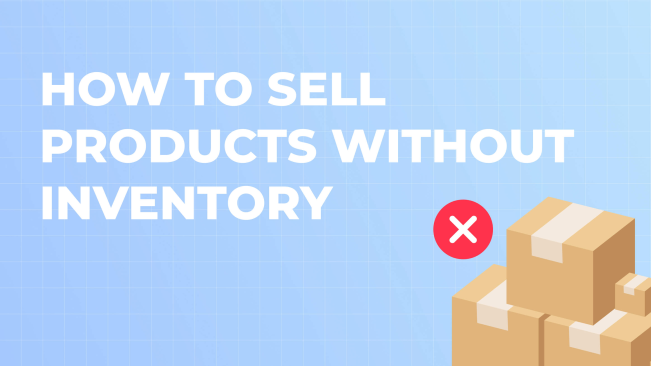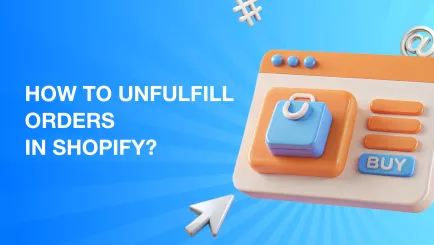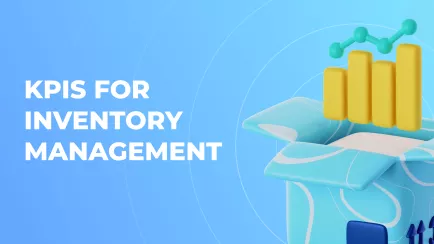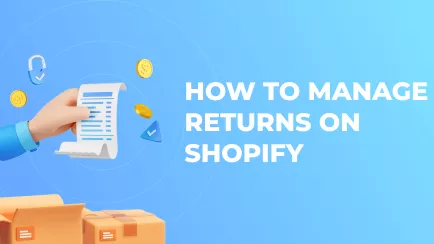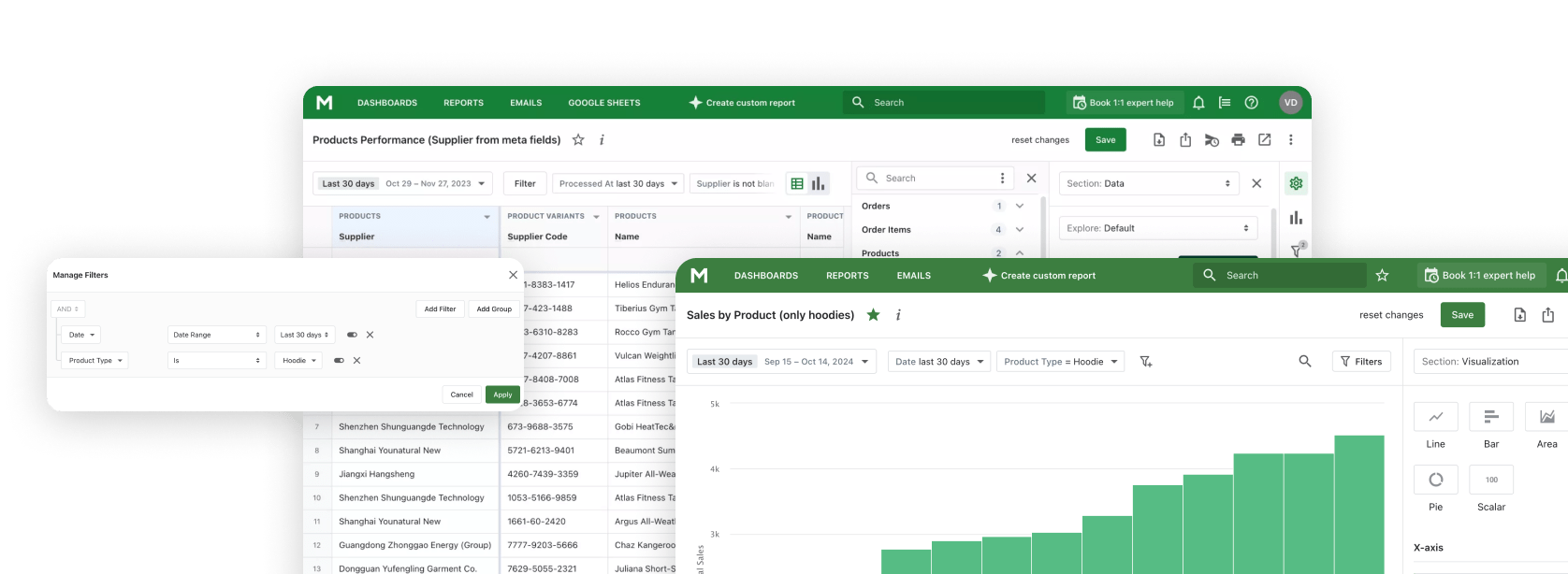In 2024, starting an online store without inventory is easier than ever. There are few business models that empower you to market a rich assortment of goods avoiding the hassle of managing stock and shipping. Instead, you work together with vendors and manufacturers who send orders straight to your clients.
Shopify Inventory Reports can help you monitor the availability and turnover of products handled by your vendors, ensuring a seamless supply chain for your customers.
Explore related reports
Mipler, a powerful reporting tool for Shopify, can help to streamline your business even further. Our Shopify App facilitates your business with its advanced reporting features, personalized Shopify Dashboards, and real-time data integration.
In this article, we'll explore effective ways to implement this strategy, highlighting the benefits and steps involved.
Types of E-commerce Businesses for Selling Products Without Inventory
How to start online store without inventory is a big question for many aspiring businessmen. Here are several types of e-commerce models you can begin with:
Dropshipping
Dropshipping without inventory is a method where you collaborate with suppliers who manage stock and shipping logistics. Your role involves listing their goods on your online shop and fulfilling orders only as they are placed by customers. This model is appealing for its low initial investment and minimal operational overhead. However, success hinges on selecting reliable suppliers who can consistently deliver quality products within agreed timelines.
Print on Demand
This method enables you to offer custom-designed merchandise such as apparel, accessories, or home decor items and is a great choice if you think about how to start an online clothing store without inventory. When a customer decides to buy something, the item is manufactured and shipped directly from an external provider. You can be flexible in product offerings without a large upfront investment. Yet, it can be costlier per unit due to production fees and may require careful monitoring of product quality and shipping times.
Affiliate Marketing
This business model involves promoting products from other companies on your website or blog. You earn commissions for each sale generated through your affiliate links, so you can sell products without inventory complexities. Success in affiliate marketing depends largely on how you attract and convert traffic, as well as navigate the competitive selection of affiliate programs.
Digital Products
Selling Digital Products allows you to sell online without inventory, listing such as e-books, online courses, software, or digital art, and offers substantial profit and scalability. These products are delivered instantly upon purchase, requiring no physical warehouse or shipping logistics. However, creating valuable digital content requires specialized skills and ongoing marketing activities to perform in saturated markets and mitigate the risks of piracy.
Subscription Boxes
This method capitalizes on recurring revenue streams by curating themed product assortments delivered at regular intervals. Collaborating with suppliers empowers you to concentrate on your unique offerings and start an online store without inventory. Successful subscription box businesses excel in product curation, maintaining subscriber engagement, and forging strong supplier collaboration to provide high-quality and timely delivery.
Wholesale and Fulfillment by Amazon (FBA)
Wholesale and Fulfillment by Amazon involves purchasing products in bulk from wholesalers and sending them to Amazon's fulfillment centers. Amazon takes care of warehousing, packing, and delivery after clients place orders, so you can begin selling product online without inventory. This method offers access to Amazon's extensive customer base, a hands-off fulfillment process, and the potential for significant sales volume. However, it requires an upfront payment for the inventory, and ongoing warehouse fees, and faces competition from other sellers on the platform.
Online Marketplaces
Platforms like eBay, Etsy, or Poshmark allow you to sell online products without inventory. These platforms offer their own systems for managing stock and delivery, so you can sell products easily. Benefits include access to an established customer base, straightforward setup processes, and built-in marketing tools.
Licensing Your Products
You can create products and license them to enterprises responsible for production, distribution, and sales, so you can start online store without inventory and earn royalties. This approach offers the potential for passive income and leverages the licensee's distribution channels.
Each of these methods of how to sell without inventory addresses different business goals, target audiences, and entrepreneurial strengths. By carefully selecting the methods and leveraging available resources, aspiring online store owners can effectively bypass traditional stock management complexities.
Top 5 Ways: How to Start an Online Store Without Inventory
Dropshipping

Make deals with vendors who handle stock and delivery to sell without inventory. List their catalog items on your Shopify store and fulfill orders as they come in, with producers shipping products right to your clients. This approach minimizes upfront costs and excludes warehousing.
Pros:
- Minimal investment is required to start selling.
- Suppliers manage warehousing and delivery.
- Access to an unlimited assortment of products to sell.
Cons:
- Lower profit margins.
- Dependency on suppliers.
- High competition among drop shippers can affect profitability.
Print on Demand

Create unique products like apparel or accessories and sell clothing online without inventory. When your client purchases an item, a print-on-demand service prints the design on the t-shirt or hoodie and ships it to the buyer.
Pros:
- Create unique designs tailored to your audience.
- Products are produced only when ordered.
- Easy to expand to a wider range of products without upfront costs.
Cons:
- Higher production costs per unit.
- Challenging to ensure consistency in product quality and printing.
- Products may take longer to reach customers compared to stocked items.
Affiliate Marketing

Promote products from other companies on your Shopify store. Earn commissions for sales generated through your affiliate links, without the responsibility of product procurement or logistics. Success depends on the amount of traffic and converting visitors into customers through effective marketing strategies.
Pros:
- Earn commissions without selling goods.
- Low startup costs.
- Variety of product niches.
Cons:
- Income is directly tied to sales made through affiliate links.
- Requires advanced marketing strategies to increase traffic and conversions.
- Competitive landscape.
Digital Products

Sell downloadable products such as e-books, courses, or digital artwork. These items require no physical inventory and are delivered instantly upon purchase.
Pros:
- Minimal costs once products are created.
- Instant delivery.
- Unlimited potential for sales.
Cons:
- Digital products can be easily duplicated or shared illegally.
- Competitive market with many creators offering similar products.
- Requires skills in product creation and digital marketing.
Subscription Boxes

Curate product collections for different niches delivered to subscribers on a recurring basis. Collaborate with suppliers who manage delivery, you can learn how to sell product without inventory and focus on promoting your unique offerings. Subscription boxes offer predictable revenue and increased customer loyalty.
Pros:
- Predictable income from subscribers.
- Opportunity to build long-term relationships with customers.
- Minimal inventory management.
Cons:
- Need to consistently deliver value and variety to retain subscribers.
- Managing shipping schedules and customer expectations.
- Dependence on suppliers for timely delivery and product quality.
Instructions: How to Set Up Selling Online Without Inventory in Shopify
Setting up a store on Shopify involves several key steps to get started on how to sell products without inventory.
- Select a business model. Decide on the method you'll use, such as dropshipping, print on demand, affiliate marketing, selling digital products, or subscription boxes.
- Create a Shopify account. Create a Shopify account if you haven't already. Choose a plan that suits your business needs and budget.
- Design your store. Personalize your Shopify store's appearance and layout to reflect your brand. Pick a design layout that will attract the target audience.
- Install necessary apps. Depending on your chosen business structure, install Shopify apps that facilitate operations like dropshipping integrations, print-on-demand services, affiliate tracking, digital product delivery, or subscription management. For instance, For instance, Mipler integrates with Shopify and helps you to create and customize detailed Shopify Reports to fit specific business needs.
- Source products or services. If you're dropshipping, find reliable suppliers who produce goods you want to sell. For print-on-demand, create or source designs for your custom products. If using affiliate marketing, subscribe to programs relevant to your niche. If selling digital products, create or acquire your digital content. For subscription boxes, make deals with suppliers for recurring product shipments.
- Set up items listings. Add goods or services to your website catalog. Include detailed descriptions, high-quality images, pricing, and any variants or options available.
- Configure payment gateways. Set up ways to accept payments from customers. Shopify integrates with different payment processors, so you can transactions securely.
- Manage shipping settings. Configure shipping settings based on your business type. For dropshipping and print-on-demand, set shipping rates provided by suppliers. For digital products and some subscription boxes, no shipping configuration may be necessary.
- Test your store. Before launching, thoroughly test your Shopify store to ensure everything works smoothly. Check product listings, payment processes, and any automated features like digital product delivery or subscription renewals.
- Launch your website. Once everything is ready and tested, launch your no inventory online store on Shopify. Announce your launch through social media, email newsletters, or other marketing channels to attract your first clients.
- Monitor and optimize. Evaluate data using Shopify analytics and Mipler insights to get a more detailed overview of your performance. Refine based on the feedback you get from clients, conversion rates, and trends to increase sales.
What is the Advantage of Selling Without Inventory?
The main benefit of selling without inventory lies in reducing investments and complexities traditionally associated with managing physical stock. It has some key advantages:
- Lower Financial Risk: if you were thinking about how to start an online boutique without inventory on budget, this method lets you avoid large payments in advance for purchasing and storing goods. It is a great choice for startups and small businesses with limited capital.
- Reduced Ongoing Expenses: You can lower operational costs for warehousing, inventory tracking systems, and personnel.
- Flexibility: Selling without inventory lets you scale operations quickly. Companies can easily expand their product assortment without logistical limitations.
- Focus on Core Competencies: By outsourcing delivery to suppliers or third-party services, businesses can concentrate on marketing, customer service, and product development.
- Adaptability: Without inventory tying up capital, you can swiftly adjust to changing market demands. They can introduce new assortment or discontinue underperforming goods without the risk of inventory obsolescence.
- Global Reach and Accessibility: Selling online without inventory allows you to reach a global audience without the logistical challenges of international shipping and storage.
Challenges Worth Completing Before Starting an Online Store Without Inventory
Before launching an online store, it's crucial to tackle these key challenges:
- Supplier Reliability: Ensure your suppliers can consistently deliver on time to maintain customer happiness and uphold your brand reputation.
- Legal and Contractual Considerations: Learn about the legal aspects of your business model. Draft clear agreements with suppliers, affiliates, or licensors to protect your interests.
- Technology and Platform Setup: Familiarize yourself with e-commerce platforms like Shopify and necessary integrations to ensure they meet your operational needs and scale with your business.
- Market Research and Competition Analysis: Conduct thorough research to identify your audience, assess demand, and understand competitors. Tailor your marketing strategies accordingly.
- Customer Acquisition: Develop a robust marketing plan using SEO, content marketing, social media, and email campaigns to engage and convert leads from the outset.
- Customer Support and Experience: Plan for effective assistance to handle inquiries, returns, and complaints promptly, fostering trust and loyalty.
- Financial Planning: Create a detailed financial plan covering startup costs, operating expenses, pricing, and cash flow management to sustain and grow your business.
- Logistics and Shipping Strategy: If applicable, establish efficient logistics and shipping processes to manage orders seamlessly and provide clear communication with customers.
- Compliance and Regulations: Stay compliant with tax laws, data protection regulations, and industry-specific requirements relevant to your e-commerce operations.
- Continuous Adaptation: Keep an eye on industry trends and target audience behavior to adapt your strategies and tactics for ongoing success in the dynamic e-commerce landscape.
Frequently Asked Questions About How to Sell Online without Inventory
How to start an online business with no inventory?
To establish a startup without inventory hassle, consider dropshipping. Collaborate with suppliers who manage warehousing and logistics. List their products on your e-commerce platform, concentrate on marketing efforts, and prioritize customer service. This approach lets you focus on business growth while your suppliers handle operational logistics.
How to have an online store without inventory?
To operate an online store without inventory, utilize Shopify and integrate the Mipler app. Mipler simplifies product sourcing, order fulfillment, and supplier management. Hence, you can focus on business growth and marketing efforts, while suppliers handle logistics efficiently.
What is unique about creating an inventory-free online store for the clothing sector?
Setting up an online clothing store without managing warehousing involves utilizing dropshipping. This method lets you market a wide assortment of styles and sizes without warehousing, reducing investments and financial risks. Platforms like Shopify and tools such as Mipler automate product sourcing and order fulfillment, ensuring efficient operations. This setup lets you focus on staying current with fashion trends and engaging with customers effectively.
